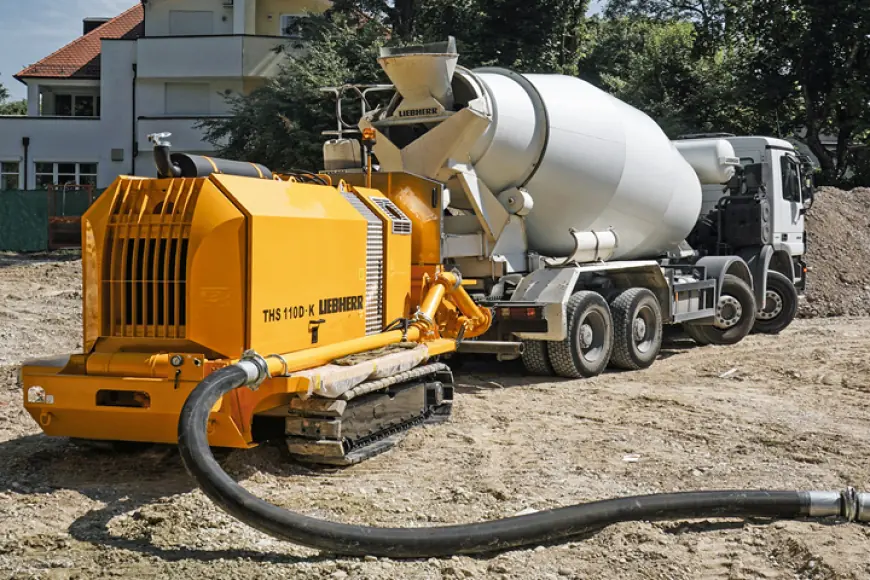What to Expect from a Ready Mix Concrete Delivery in London
Discover how a ready mix concrete delivery works in London—timing, site prep, delivery process, and what builders should know before concrete arrives.

Ordering ready mix concrete is a game-changer for construction projects across London, from a basement conversion in Kensington to a new housing development in Stratford. It streamlines the pouring process, ensures consistent quality, and saves immense time and labour compared to mixing concrete on site. However, for those new to the process, or even experienced builders facing London's unique logistical challenges, knowing what to expect from a ready mix concrete delivery can alleviate anxieties and ensure a smooth, efficient operation.
This guide will walk you through the entire delivery process in London, highlighting key considerations and what you need to prepare to make your concrete pour a success.
1. Before You Order: The Crucial Planning Phase
A successful delivery begins long before the truck leaves the plant.
-
Accurate Volume Calculation: This is paramount. Over-ordering leads to waste and disposal costs; under-ordering means delays and potentially costly short loads. Measure your area (length x width x depth) in meters to calculate cubic meters (m³). Always add 5-10% extra for wastage, uneven bases, or slight miscalculations.
-
Specify the Correct Concrete Grade and Type:
-
Grade: C10 (blinding), C25 (foundations, domestic slabs), C35 (heavy-duty, structural). Your structural engineer or building plans will specify this.
-
Type: Is it standard? Do you need fibres? A retarded set (for longer working time)? Pumping concrete?
-
Admixtures: Communicate any specific requirements (e.g., frost resistance, faster setting).
-
Confirm Delivery Address and Access: London's narrow streets, parking restrictions, and traffic can be challenging.
-
Postcode and Full Address: Be precise.
-
Site Restrictions: Inform the supplier of any weight limits, height restrictions (e.g., low bridges, overhead cables), width restrictions (narrow alleyways), or turning limitations for large trucks.
-
Ground Conditions: Is the ground firm enough to support a heavy concrete mixer truck?
-
Method of Placement: How will the concrete get from the truck to your pour location?
-
Chute Delivery: Standard for direct pours (most common). Requires the truck to get very close to the pour site. Mixers have chutes that extend several metres.
-
Concrete Pump: Essential for pours at height, over obstacles, or in areas with restricted access. Inform the supplier if you need a pump (boom pump or ground line pump) as this needs to be coordinated, often with a separate company. This is very common in densely packed London.
-
Wheelbarrowing: For smaller quantities or very tight access, but extremely labour-intensive and slow.
-
Desired Slump/Workability: Inform the supplier if you need a specific slump (measure of consistency/fluidity) for your application (e.g., a stiffer mix for slopes, a more fluid mix for intricate formwork).
-
Schedule and Timing:
-
Lead Time: Book well in advance, especially for popular times or specific concrete types. Same-day concrete is often available but usually at a premium.
-
Traffic Considerations: London traffic is notorious. Discuss estimated arrival times and potential for delays with the supplier. Allow a buffer.
-
Cancellation Policy: Understand the supplier's cancellation and short-load policies.
2. On Delivery Day: Preparation and Arrival
Preparation on the day of delivery is key to a smooth pour.
-
Clear the Access Route: Ensure the entire route from the street to the pour site is clear of obstructions (vehicles, skips, materials, debris).
-
Prepare the Site and Formwork: All formwork must be fully constructed, securely braced, sealed, and ready to receive concrete before the truck arrives. Reinforcement (rebar) should be in place.
-
Have Tools Ready: Shovels, rakes, screeds, vibrators (if needed), floats, and wheelbarrows (if hand-pouring).
-
Water and Protective Gear: Have access to water for washing down tools and spills. Ensure all personnel have appropriate PPE (gloves, safety boots, eye protection).
-
Manpower Ready: Have enough people on site to handle the volume and speed of the pour. Concrete waits for no one!
-
Payment: Confirm payment method and have it ready if not paid in advance.
The Truck's Arrival:
-
Identify the Truck: The mixer truck will arrive, often looking quite large for London streets!
-
Guidance: Guide the driver carefully to the optimal discharge point. They are experienced, but local knowledge helps.
-
Proof of Delivery (POD): The driver will present a ticket (POD) detailing the volume, grade, time batched, and any admixtures. Check this carefully to ensure it matches your order. This is your guarantee of what's been delivered.
-
Slump Check (Optional but Recommended): The driver might perform a slump test on site (or you can request it) to verify the concrete's consistency matches what you ordered.
-
Admixtures on Site (if needed): If you've ordered specific admixtures (e.g., a retarder for extra working time) that are added on-site, the driver will manage this. Do not ask the driver to add extra water unless approved by your structural engineer or the concrete supplier's technical team, as it will weaken the concrete.
3. During the Pour: Placement and Working Time
-
Controlled Discharge: The driver will control the rate of discharge using the mixer drum. Communicate clearly if you need them to slow down, speed up, or stop.
-
Placement Method:
-
Chute: Concrete flows down the chutes directly into your formwork. Ensure the chutes are clean and angled correctly.
-
Pump: If using a pump, the mixer truck will discharge into the pump's hopper. The pump operator will then control the flow to the pour location via the boom or ground line. This is much faster.
-
Wheelbarrowing: If wheelbarrowing, have a steady flow of people to quickly move the concrete away from the truck.
-
Compaction: As concrete is placed, it must be properly compacted (e.g., with a vibrator or by tamping/rodding) to remove trapped air voids, which can significantly reduce strength.
-
Limited Working Time: Remember, concrete starts to set relatively quickly. Depending on the mix and weather (especially in a hot London summer), you typically have 1-2 hours of working time from when the concrete was batched. Work efficiently!
4. After the Pour: Finishing and Curing
The delivery may be over, but the work isn't.
-
Clean Up: Once the pour is complete, ensure the truck driver can wash down their chutes/equipment into a designated area (e.g., a wheelbarrow or washout pit, not directly onto the street or into drains).
-
Finishing: Once the concrete begins to firm up, perform your desired finishing operations (screeding, floating, trowelling).
-
Crucial Curing: This is perhaps the most important post-pour step, especially in London's varied climate. Concrete needs moisture to gain strength.
-
Protect from Rapid Drying: Cover the fresh concrete with plastic sheeting or damp hessian for at least 7 days (longer in hot or windy weather).
-
Keep Moist: Regularly mist the surface with water, especially during hot, dry, or windy spells, to prevent plastic shrinkage cracking and ensure full hydration.
Conclusion: Planning for a Seamless London Delivery
A ready mix concrete delivery in London, while seemingly straightforward, requires meticulous planning and preparation to be successful. By accurately calculating your needs, communicating clearly with your supplier about site access and specific mix requirements, and ensuring your site is fully prepared, you can transform what might seem like a complex logistical challenge into a smooth, efficient, and ultimately successful part of your construction project. The result will be a high-quality, durable concrete structure that stands the test of time.
What's Your Reaction?
 Like
0
Like
0
 Dislike
0
Dislike
0
 Love
0
Love
0
 Funny
0
Funny
0
 Angry
0
Angry
0
 Sad
0
Sad
0
 Wow
0
Wow
0




















































